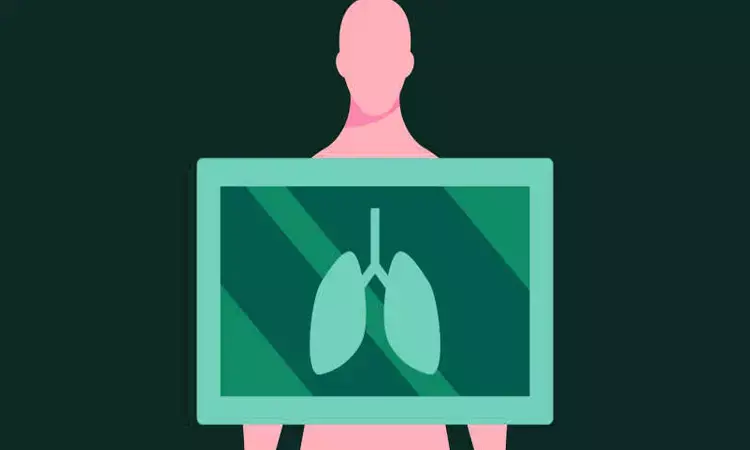- Home
- Medical news & Guidelines
- Anesthesiology
- Cardiology and CTVS
- Critical Care
- Dentistry
- Dermatology
- Diabetes and Endocrinology
- ENT
- Gastroenterology
- Medicine
- Nephrology
- Neurology
- Obstretics-Gynaecology
- Oncology
- Ophthalmology
- Orthopaedics
- Pediatrics-Neonatology
- Psychiatry
- Pulmonology
- Radiology
- Surgery
- Urology
- Laboratory Medicine
- Diet
- Nursing
- Paramedical
- Physiotherapy
- Health news
- Fact Check
- Bone Health Fact Check
- Brain Health Fact Check
- Cancer Related Fact Check
- Child Care Fact Check
- Dental and oral health fact check
- Diabetes and metabolic health fact check
- Diet and Nutrition Fact Check
- Eye and ENT Care Fact Check
- Fitness fact check
- Gut health fact check
- Heart health fact check
- Kidney health fact check
- Medical education fact check
- Men's health fact check
- Respiratory fact check
- Skin and hair care fact check
- Vaccine and Immunization fact check
- Women's health fact check
- AYUSH
- State News
- Andaman and Nicobar Islands
- Andhra Pradesh
- Arunachal Pradesh
- Assam
- Bihar
- Chandigarh
- Chattisgarh
- Dadra and Nagar Haveli
- Daman and Diu
- Delhi
- Goa
- Gujarat
- Haryana
- Himachal Pradesh
- Jammu & Kashmir
- Jharkhand
- Karnataka
- Kerala
- Ladakh
- Lakshadweep
- Madhya Pradesh
- Maharashtra
- Manipur
- Meghalaya
- Mizoram
- Nagaland
- Odisha
- Puducherry
- Punjab
- Rajasthan
- Sikkim
- Tamil Nadu
- Telangana
- Tripura
- Uttar Pradesh
- Uttrakhand
- West Bengal
- Medical Education
- Industry
Dynamic chest radiography minimally invasive tool for hemodynamic assessment of heart failure

A less invasive method for assessing the hemodynamics of heart failure is dynamic chest radiography, says an article published in European Journal of Radiology.
A significant public health issue that frequently results in hospitalization and death is heart failure. Atypical hemodynamics, with or without decreased cardiac output, define it. Right cardiac catheterization is more invasive than dynamic chest radiography. It is a large-field-of-view, real-time image-capturing system that combines imaging of the thorax with high spatial and temporal resolution with computer-assisted tracking of moving thoracic components. Cardiopulmonary blood flow may be evaluated non-invasively using dynamic chest radiography. Data on its application for heart failure hemodynamic evaluation, however, are limited. To determine heart failure hemodynamics, Hiroaki Hiraiwa and tem used dynamic chest radiography.
Twenty patients with heart failure (median age, 67 years; 17 males) received right cardiac catheterization and dynamic chest radiography. The pictures under analysis were 16-bit images (grayscale range: 0–65,535). The average of the grayscale values of each pixel within a region of interest was used to calculate the pixel values for the right atrium, right pulmonary artery, and left ventricular apex. researchers examined the relationships between right atrial pressure, pulmonary artery wedge pressure, pulmonary artery pressure, and cardiac index, as well as the lowest, maximum, amount of change, mean, and rate of change in pixel values.
The key findings of this study were:
There was a correlation between the mean right atrial pixel value and the mean right atrial pressure, as well as between the mean right pulmonary artery pixel value and the mean pulmonary artery pressure (R = 0.546, P = 0.013), the mean left ventricular apex pixel value change rate and the mean pulmonary artery wedge pressure (R = 0.664, P = 0.001), or the cardiac index (R = 0.606, P = 0.005).
Low cardiac index was shown to be associated with high pulmonary artery wedge pressure and low cardiac index alone.
In conclusion, dynamic chest radiography shows promise as a less invasive alternative to right heart catheterization and is practical for heart failure hemodynamic evaluation.
Reference:
Hiraiwa, H., Sakamoto, G., Ito, R., Koyama, Y., Kazama, S., Kimura, Y., Kondo, T., Morimoto, R., Okumura, T., & Murohara, T. (2023). Dynamic chest radiography as a novel minimally invasive hemodynamic imaging method in patients with heart failure. In European Journal of Radiology (p. 110729). Elsevier BV. https://doi.org/10.1016/j.ejrad.2023.110729
Neuroscience Masters graduate
Jacinthlyn Sylvia, a Neuroscience Master's graduate from Chennai has worked extensively in deciphering the neurobiology of cognition and motor control in aging. She also has spread-out exposure to Neurosurgery from her Bachelor’s. She is currently involved in active Neuro-Oncology research. She is an upcoming neuroscientist with a fiery passion for writing. Her news cover at Medical Dialogues feature recent discoveries and updates from the healthcare and biomedical research fields. She can be reached at editorial@medicaldialogues.in
Dr Kamal Kant Kohli-MBBS, DTCD- a chest specialist with more than 30 years of practice and a flair for writing clinical articles, Dr Kamal Kant Kohli joined Medical Dialogues as a Chief Editor of Medical News. Besides writing articles, as an editor, he proofreads and verifies all the medical content published on Medical Dialogues including those coming from journals, studies,medical conferences,guidelines etc. Email: drkohli@medicaldialogues.in. Contact no. 011-43720751


